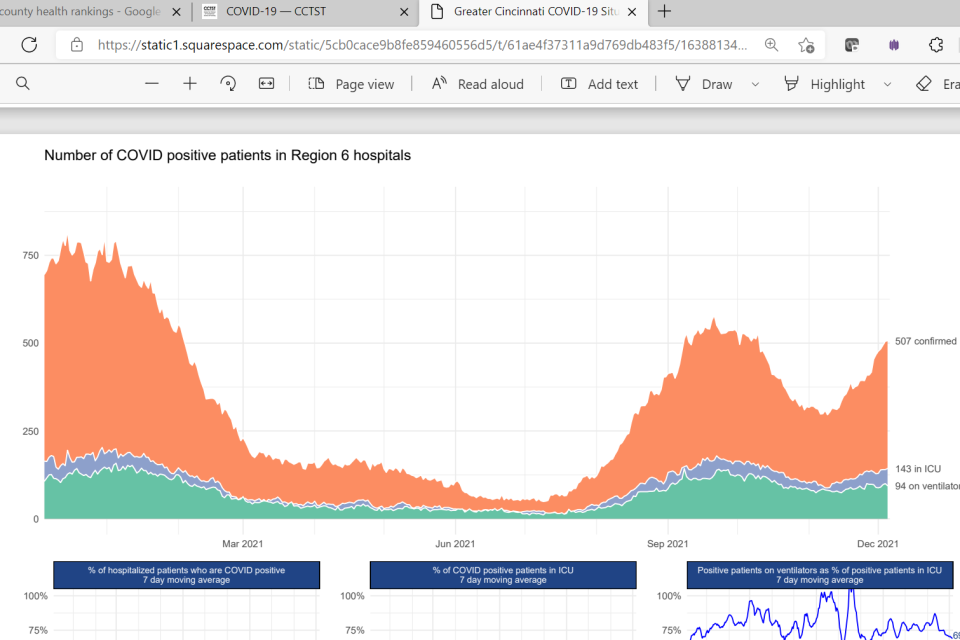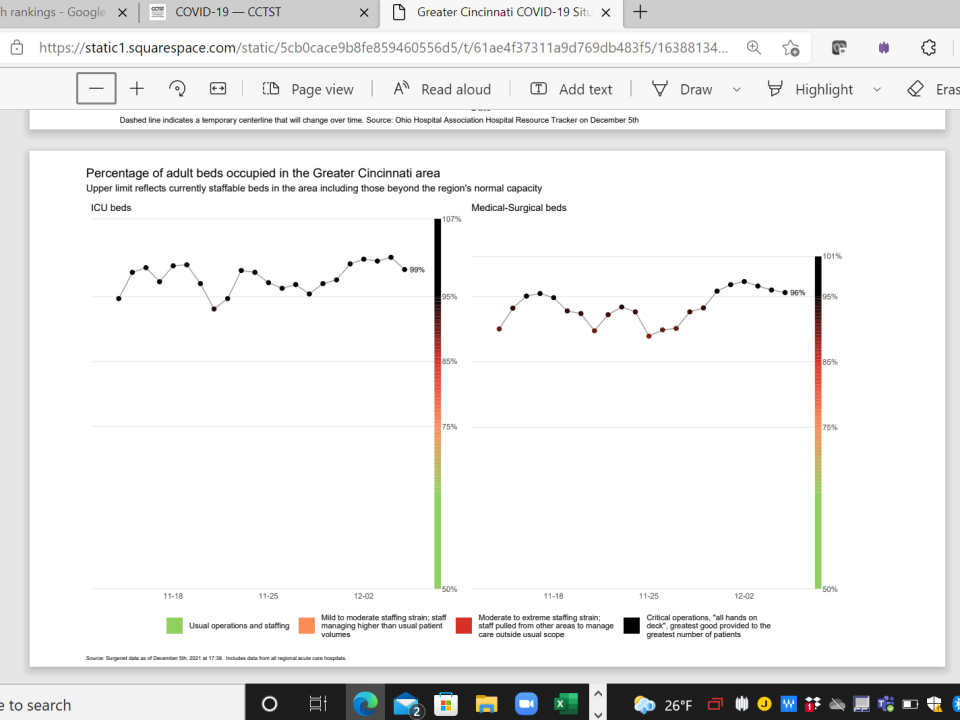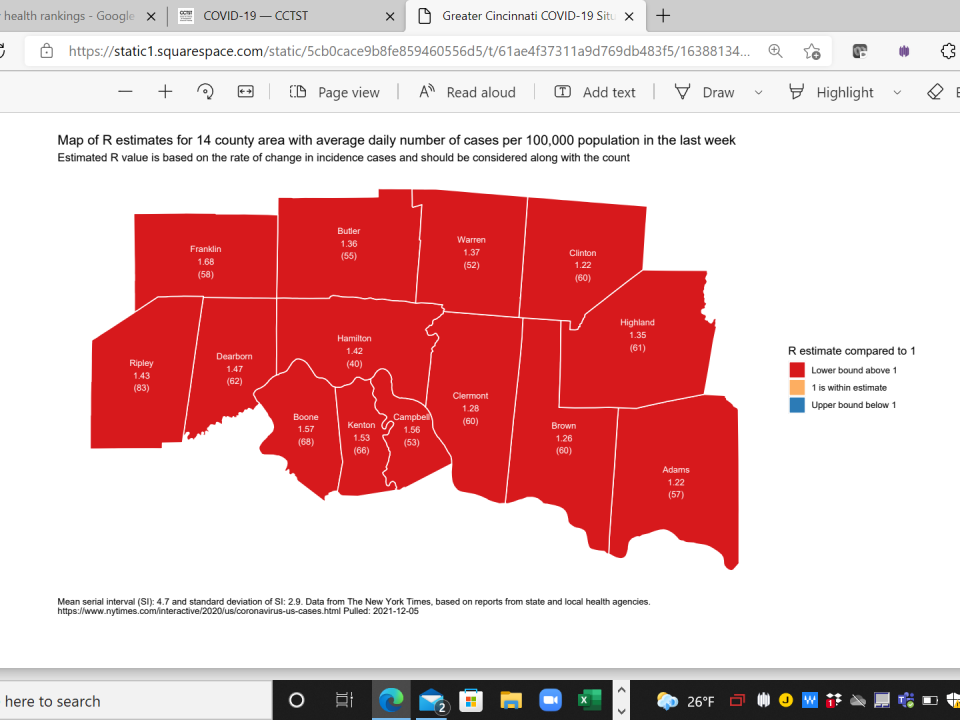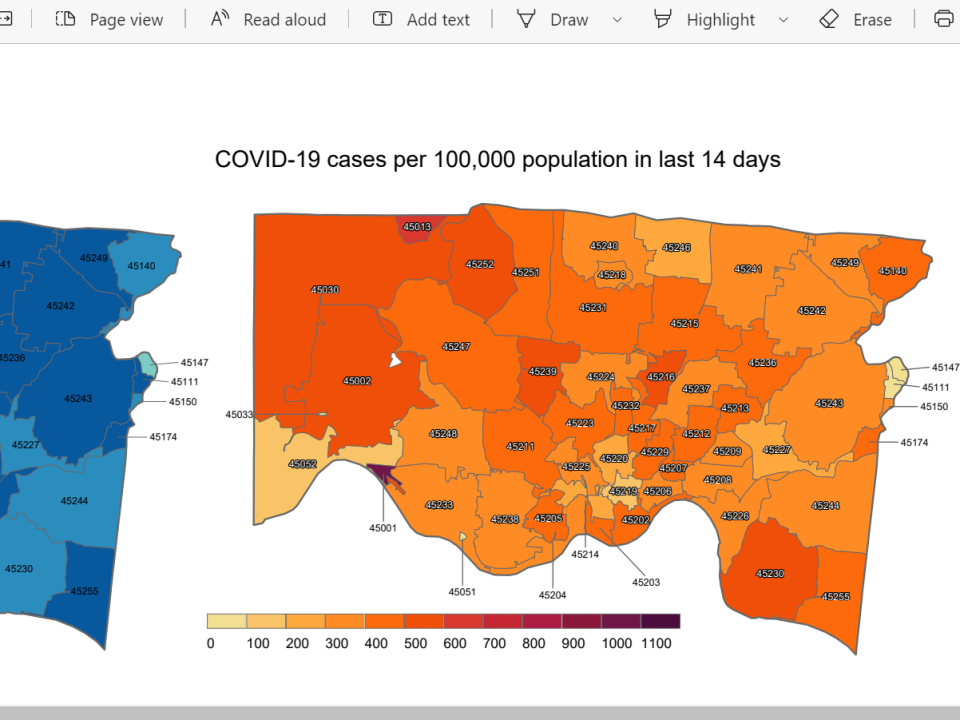COVID-19: Rising cases in Cincinnati area hospitals require 'all hands on deck'
The number of people with COVID-19 in Cincinnati area hospitals has returned to a high level as the hospitals remain crowded to near capacity. The term that the 40 hospitals use for the current strain on their operations is: "critical operations, 'all hands on deck', greatest good provided to the greatest number of patients."
Data posted on the Health Collaborative's Situational Dashboard show the rate of new infections across the region rose over the level of community spread shortly after Thanksgiving, as health officials had expected. The rate of local positive tests now is nearing 1 in 10.
The cases are from the delta variant of the novel coronavirus "although we are, of course, monitoring" for the presence of the recently emerged omicron variant, a report on the dashboard notes. Omicron appears to be more contagious but less dangerous than delta, scientists say.

On Sunday, more than 500 local hospital beds held COVID-19 patients. It was the first time the number of COVID-19 patients crossed the 500 level since early October. according to data from the collaborative, a coalition of the six hospital systems in the Cincinnati area.
The number of hospitalized COVID-19 patients exceeded 500 for much of the surge last fall and winter, then fell below that level in early February before again crossing 500 for most of September
Of the 507 COVID-19 patients in local hospitals on Sunday, 143 were in intensive care and 94 were on ventilators. Measured another way, 1 of every 6 patients now in local hospitals have COVID-19.

On Sunday, 99% of the region's intensive care beds were full, effectively leaving five of 513 spaces open. The 40 hospitals have roughly 2,500 medical-surgical beds and 96% of them were full Sunday, running above 95% of capacity for six straight days.
The problem for the hospitals posed by this fifth wave of the pandemic isn't limited to pressure on the number of beds and other facilities. Each wave of having so many critically ill patients puts strain on hospital workers. The 90-plus patients on ventilators must have a worker to monitor and operate that ventilator, for example.

Where is COVID-19 especially strong now?
The Health Collaborative's dashboard identifies local ZIP codes with the highest per capita rates of cases over the last 14 days.
On Sunday, the ZIP code with the highest per capita rate of new cases was 45001 (Addyston), where the vaccination rate is below 50%. Following closely behind is a nub of the 45013 ZIP in northern Crosby and Colerain townships.

A map shows the ZIPs with the highest rates are concentrated in western Hamilton County, including 45236 (Groesbeck, Monfort Heights and North College Hill). Pockets with high cases elsewhere include 45216 (covering Elmwood Place and Carthage) and 45230 (Mount Washington).
Another part of the dashboard shows where vaccination rates are lowest in the county. The two ZIPs with the lowest rates were 45232 (Spring Grove Village and Winton Hills) and 45225 (Camp Washington, Villages at Roll Hill, East Westwood, Millvale and part of North Fairmount). Vaccination rates in those two ZIP are below 40%, little changed from nearly three months ago, an Enquirer analysis shows.
This article originally appeared on Cincinnati Enquirer: COVID new variant: COVID-19 cases in Cincinnati area hospitals high

